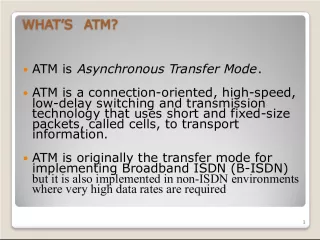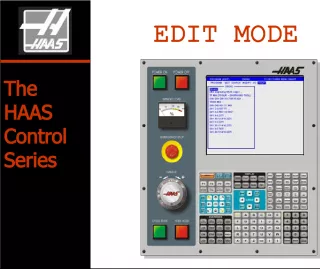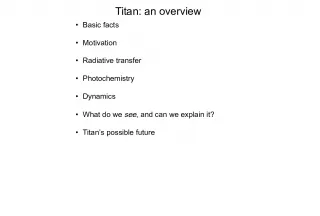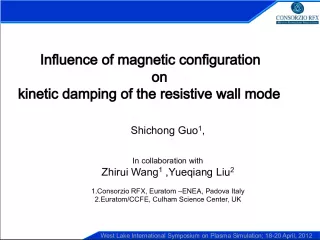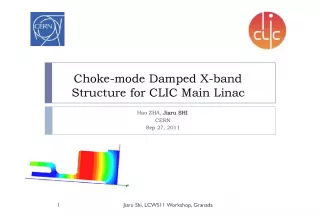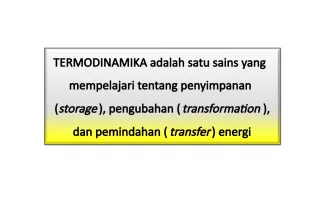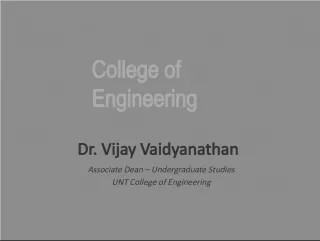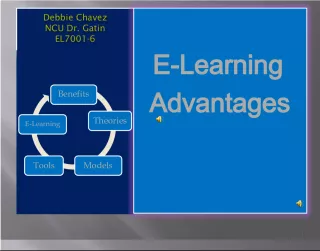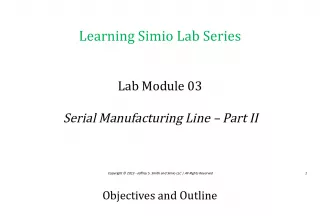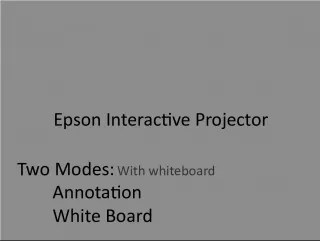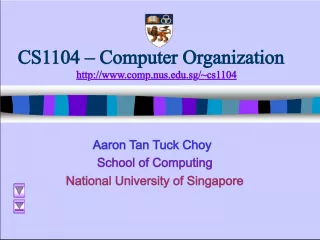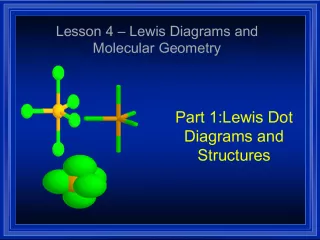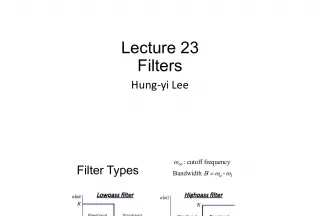An Overview of Asynchronous Transfer Mode (ATM)
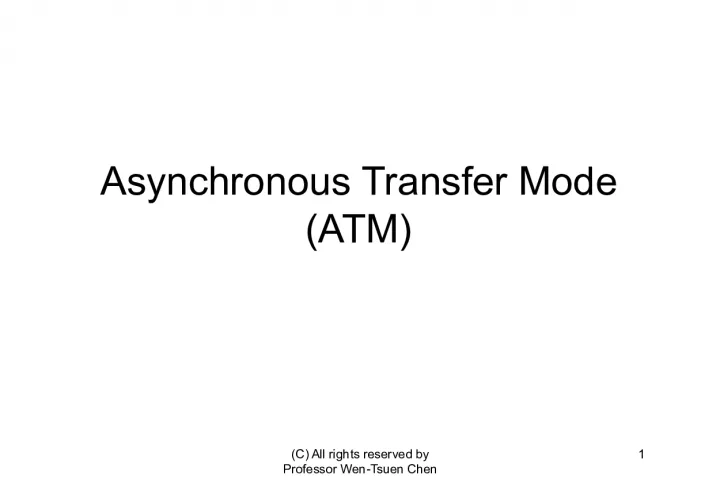

This article provides an introduction to Asynchronous Transfer Mode (ATM), its origins as a transfer mode for Broadband ISDN, and the creation of the ATM Forum to develop standards.
- Uploaded on | 0 Views
-
 kacie
kacie
About An Overview of Asynchronous Transfer Mode (ATM)
PowerPoint presentation about 'An Overview of Asynchronous Transfer Mode (ATM)'. This presentation describes the topic on This article provides an introduction to Asynchronous Transfer Mode (ATM), its origins as a transfer mode for Broadband ISDN, and the creation of the ATM Forum to develop standards.. The key topics included in this slideshow are Asynchronous Transfer Mode, ATM, Broadband ISDN, CCITT, ITU,. Download this presentation absolutely free.
Presentation Transcript
1. (C) All rights reserved by Professor Wen-Tsuen Chen 1 Asynchronous Transfer Mode (ATM)
2. (C) All rights reserved by Professor Wen-Tsuen Chen 2 An Overview of ATM ATM is Asynchronous Transfer Mode . ATM is originally the transfer mode for implementing Broadband ISDN (B-ISDN). In 1988, CCITT (from ITU) issued the first two recommendations relating to B-ISDN: I.113 Vocabulary of Terms for Broadband Aspects of ISDN I.121 Broadband Aspects of ISDN In 1911, the ATM Forum was created with the goal of accelerating the development of ATM standards.
3. (C) All rights reserved by Professor Wen-Tsuen Chen 3 An Overview of ATM Connection-oriented packet-switched network Used in both WAN and LAN settings Signaling (connection setup) Protocol: Q.2931 Packets are called cells (53 bytes) 5-byte header + 48-byte payload Commonly transmitted over SONET other physical layers possible Connections can be switched (SVC), or permanent (PVC).
4. (C) All rights reserved by Professor Wen-Tsuen Chen 4 Variable vs. Fixed-Length Packets No Optimal Length if small: high header-to-data overhead if large: low utilization for small messages Fixed-Length Easier to Switch in Hardware simpler enables parallelism
5. (C) All rights reserved by Professor Wen-Tsuen Chen 5 Big vs. Small Packets Small Improves Queue behavior finer-grained pre-emption point for scheduling link maximum packet = 4KB link speed = 100Mbps transmission time = 4096 x 8/100 = 327.68us high priority packet may sit in the queue 327.68us in contrast, 53 x 8/100 = 4.24us for ATM near cut-through behavior two 4KB packets arrive at same time link idle for 327.68us while both arrive at end of 327.68us, still have 8KB to transmit in contrast, can transmit first cell after 4.24us at end of 327.68us, just over 4KB left in queue
6. (C) All rights reserved by Professor Wen-Tsuen Chen 6 Big vs Small (cont) Small Improves Latency (for voice) voice digitally encoded at 64KBps (8-bit samples at 8KHz) need full cell s worth of samples before sending cell example: 1000-byte cells implies 125ms per cell (too long) smaller latency implies no need for echo cancellors ATM Compromise: 48 bytes = (32+64)/2
7. (C) All rights reserved by Professor Wen-Tsuen Chen 7 An Overview of ATM ATM operates on a best effort basis. ATM guarantees that cells will not be disordered. Two types of connections: Point-to-point Multipoint (Multicast) Four Types of Services: CBR (Constant Bit Rate) VBR (Variable Bit Rate) ABR (Available Bit Rate) Flow Control, Rate-based, Credit- based UBR (Unspecific Bit Rate) No Flow control. Aggregate Bandwidth vs. Shared Medium (FDDI, Fast Ethernet).
8. (C) All rights reserved by Professor Wen-Tsuen Chen 8 ATM Network Structure
9. (C) All rights reserved by Professor Wen-Tsuen Chen 9 Cell Format User-Network Interface (UNI) host-to-switch format GFC: Generic Flow Control (still being defined) VCI: Virtual Circuit Identifier VPI: Virtual Path Identifier Type: management, congestion control, AAL5 (later) CLPL Cell Loss Priority HEC: Header Error Check (CRC-8) GFC HEC (CRC-8) 4 16 3 1 8 VPI VCI CLP Type Payload 384 (48 bytes) 8
10. (C) All rights reserved by Professor Wen-Tsuen Chen 10 Cell Format Network-Network Interface (NNI) switch-to-switch format GFC becomes part of VPI field VPI HEC (CRC-8) 16 3 1 12 VCI CLP PTI Payload 384 (48 bytes) 8
11. (C) All rights reserved by Professor Wen-Tsuen Chen 11 ATM Characteristics No error protection or flow control on a link-by-link basis. ATM operates in a connection- oriented mode. The header functionality is reduced. The information field length is relatively small and fixed.
12. (C) All rights reserved by Professor Wen-Tsuen Chen 12 ATM Protocol Stack Physical Layer (PMD) ATM Layer ATM Adaptation Layer Higher Layers Higher Layers Control plane User plane Management plane Layer management Plane management Virtual Channel Functions Virtual Path Functions
13. (C) All rights reserved by Professor Wen-Tsuen Chen 13 Physical Layer Interface Specification SONET STS-3C SONET STS-12 DS3 STP for ATM LAN etc.
14. (C) All rights reserved by Professor Wen-Tsuen Chen 14 ATM Layer Service Transparent transfer of 48-octet data unit Deliver data in sequence on a connection Two levels of multiplexing Three types of connections Point-to-point Point-to-Multipoint Multipoint-to-Multipoint Transport is best-effort Network QoS negotiation Traffic control and congestion control
15. (C) All rights reserved by Professor Wen-Tsuen Chen 15 ATM Layer Functions Cell multiplexing and switching Cell rate decoupling Cell discrimination based on pre-defined VPI/VCI Quality of Service (QoS) Payload type characterization Generic flow control Loss priority indication and Selective cell discarding Traffic shaping
16. (C) All rights reserved by Professor Wen-Tsuen Chen 16 Pre-assigned VPI/VCI Values Unassigned Cell Indication (VPI = 0, VCI = 0) Meta signaling (VCI=1) Meta signaling is the bootstrap procedure used to establish and release a signaling VC. Not used for PVC setup. General broadcasting signaling (VCI=2) OAM F4 flow indication -- segment and end- to-end (VCI=3 and VCI=4) Point-to-Point Signaling (VCI=5) Carriage of Interim Local Management Interface (ILMI) messages (VPI=0, VCI=16)
17. (C) All rights reserved by Professor Wen-Tsuen Chen 17 Cell Rate Decoupling and Cell Discrimination Cell Rate Decoupling ATM sending entity adds unassigned cells to the assigned cell stream in order to adjust to the cell rate acquired by the payload capacity of the physical layer (R). Cell Discrimination Meta signaling General broadcast signaling Point-to-point Signaling Segment OAM F4 flow cell End-to-end OAM F4 flow cell ILMI message User data
18. (C) All rights reserved by Professor Wen-Tsuen Chen 18 Virtual Channels, Virtual Paths, and the Physical Channel 100 100 200 200 300 300 100 200 100 200 300 10 20 30 40 100/100 200/300 300/10 300/40 100 200 100 200 300 10 20 30 40
19. (C) All rights reserved by Professor Wen-Tsuen Chen 19 Virtual Channels The virtual channel (VC) is the fundamental unit of transport in a B-ISDN. Each ATM cell contains an explicit label in its header to identify the virtual channel. a Virtual Channel Identifier (VCI) a Virtual Path Identifier (VPI) A virtual channel (VC) is a communication channel that provides for the transport of ATM cells between two or more endpoints for information transfer. A Virtual Channel Identifier (VCI) identifiers a particular VC within a particular VP over a UNI or NNI. A specific value of VCI has no end-to-end meaning.
20. (C) All rights reserved by Professor Wen-Tsuen Chen 20 Virtual Paths A Virtual Path (VP) is a group of Virtual Channels that are carried on the same physical facility and share the same Virtual Path Identifier (VPI) value. The VP boundaries are delimited by Virtual Path Terminators (VPT). AT VPTs, both VPI and VCI are processed. Between VPTs associated with the same VP, only the VPI values are processed (and translated) at ATM network elements. The VCI values are processed only at VPTs, and are not translated at intermediate ATM network elements.
21. (C) All rights reserved by Professor Wen-Tsuen Chen 21 Segmentation and Reassembly ATM Adaptation Layer (AAL) AAL 1 and 2 designed for applications that need guaranteed rate (e.g., voice, video) AAL 3/4 designed for packet data AAL 5 is an alternative standard for packet data AAL A TM AAL A TM
22. (C) All rights reserved by Professor Wen-Tsuen Chen 22 AAL Reference Structure Service Specific CS (SCCS) (may be Null) Common Part CS (CPCS) SAR(Common) AAL Convergence Sublayer (CS) SAR SAP SAP Primitives Primitives
23. (C) All rights reserved by Professor Wen-Tsuen Chen 23 AAL AAL Service Specific Layers ATM Transmission Convergence Sublayer PMD L a y e r M G M T ... ... 48 byte payloads add 5 byte header message
24. (C) All rights reserved by Professor Wen-Tsuen Chen 24 ATM Adaptation Layers (AAL) In order to carry data units longer than 48 octets in ATM cells, an adaptation layer is needed. The ATM adaptation layer (AAL) provides for segmentation and reassembly of higher-layer data units and for detection of errors in transmission. Since the ATM layer simply carries cells without concern for their contents, a number of different AALs can be used across a single ATM interface. The AAL maps the user, control, or management protocol data units into the information field of the ATM cell and vice versa. To reflect the spectrum of applications, four service classes have been defined by CCITT.
25. (C) All rights reserved by Professor Wen-Tsuen Chen 25 AAL Service Classification Timing between source and destination Class A Class B Class C Class D Required Not required Bit Rate Constant Variable Connection Mode Connection oriented Connectionless Circuit Emulation Packetized voice/video Connection Oriented Data Datagram Attribute AAL1 AAL2 SAAL AAL 5 AAL 4 AAL 3 Signalling (Q.93B)
26. (C) All rights reserved by Professor Wen-Tsuen Chen 26 AAL 1 (Constant Bit Rate -CBR) Functions Emulation of DS1 and DS3 Circuits Distribution with forward error correction Handle cell delay for constant bit rate Transfer timing information between source and destination Transfer structure information (structure pointer) Provide indication of unrecoverable lost or errored information Header SN SNP 47 Octets Payload SAR PDU CSI Seq Count EP CRC 1 3 3 1
27. (C) All rights reserved by Professor Wen-Tsuen Chen 27 AAL 2 Protocol Data Unit (PDU) Header SN IT 47 Octets Payload LI CRC SAR PDU ATM PDU SN: Sequence number IT: Information Type:BOM,COM,EOM,SSM Length Indicator
28. (C) All rights reserved by Professor Wen-Tsuen Chen 28 AAL 3/4 Convergence Sublayer Protocol Data Unit (CS-PDU) CPI: commerce part indicator (version field) Btag/Etag:beginning and ending tag BAsize: hint on amount of buffer space to allocate Length: size of whole PDU
29. (C) All rights reserved by Professor Wen-Tsuen Chen 29 Cell Format Type BOM: beginning of message COM: continuation of message EOM end of message SEQ: sequence of number MID: message id Length: number of bytes of PDU in this cell
30. (C) All rights reserved by Professor Wen-Tsuen Chen 30 AAL 5 PDU Structure The Simple and Efficient Adaptation Layer (SEAL), attempts to reduce the complexity and overhead of AAL 3/4. It eliminates most of the overhead of AAL 3/4. AAL 5 comprises a convergence sublayer and a SAR sublayer, although the SAR is essentially null.
31. (C) All rights reserved by Professor Wen-Tsuen Chen 31 AAL5 CS-PDU Format pad so trailer always falls at end of ATM cell Length: size of PDU (data only) CRC-32 (detects missing or misordered cells) Cell Format end-of-PDU bit in Type field of ATM header
